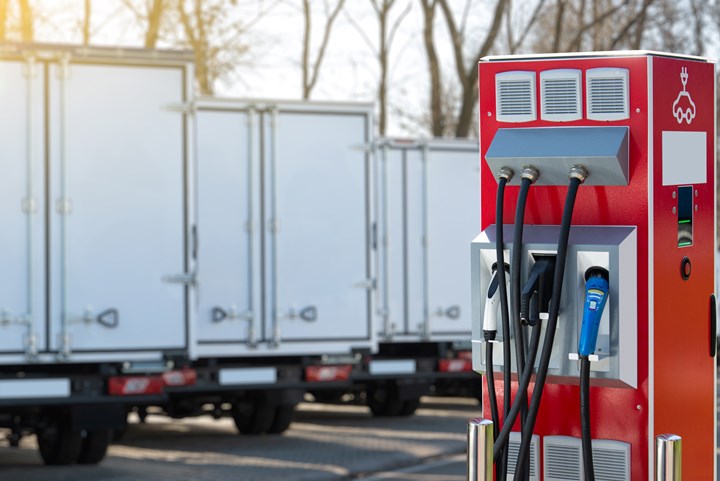Hexagon Purus continues drive toward zero-emissions with battery-electric trucks contract
Hydrogen solutions company — best known for its Type IV hydrogen cylinders — will provide fully integrated vehicle drivetrains, ProPack and power electronics for Class 6 and 8 trucks.

Photo Credit: Getty Images
Hexagon Purus (Ålesund, Norway) has been awarded a contract from a leading hybrid-electric and fully electric vehicle propulsion solutions designer, to deliver three battery-electric trucks for testing of the company’s next-generation drivetrains by Q1 2022.
Hexagon Purus will provide fully integrated vehicle drivetrains, including its proprietary ProPack high-energy density battery pack, and power electronics for one Class 6 and two Class 8 trucks. The total sales value of the contract is approximately $1.7 million (approx. NOK 15 million).
“This project involves us in the development of leading-edge propulsion technology, showcasing our proprietary battery packs and battery management systems,” says Todd Sloan, EVP Systems, Hexagon Purus. “We are pleased to contribute to ground-breaking work with propulsion solutions for zero-emission transportation.”
This contract follows several others awarded to Hexagon Purus, including delivery of a hydrogen fuel-cell electric (FCEV) Class-8 drayage truck, Class 6 and 7 FCEV trucks, composite storage systems for hydrogen vehicle prototypes and two separate agreements for Type IV hydrogen cylinder tanks.
Related Content
-
Optimizing robotic winding of composite tanks and pipes
Pioneer in mandrel-based reinforced rubber and composite products, TANIQ offers TaniqWindPro software and robotic winding expertise for composite pressure vessels and more.
-
Infinite Composites: Type V tanks for space, hydrogen, automotive and more
After a decade of proving its linerless, weight-saving composite tanks with NASA and more than 30 aerospace companies, this CryoSphere pioneer is scaling for growth in commercial space and sustainable transportation on Earth.
-
Development of a composite liquid hydrogen tank for commercial aircraft
Netherlands consortium advances cryogenic composites testing, tank designs and manufacturing including AFP, hybrid winding, welding of tank components and integrated SHM and H2 sensors for demonstrators in 2025.



